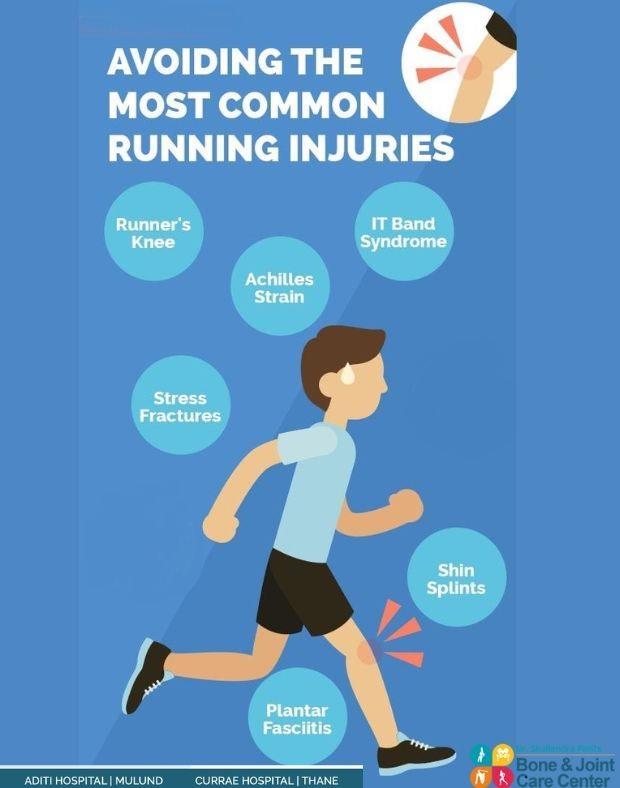How To Avoid Most Injuries During Running Sports Tournament





With everything it takes to stick to a fitness routine, the last thing you need is a running injury that necessitates the consultation of an orthopaedic doctor in Mumbai.
"Running injuries are primarily joint issues that emerge in the lower extremities." They can occur in both novice and expert runners, and they're very prevalent, especially if you don't take precautions.
Typical Running Injuries
Small aches and soreness are typical; however, the following are the most common running injuries:
Plantar fasciitis
Runner's knee Syndrome of the iliotibial band (ITB).
Achilles tendonitis
Shin splints
Fractures caused by stress.
Plantar Fasciitis
Plantar fasciitis is characterized by discomfort at the sole of the foot, from the heel to the arch.
When a person gets runners' knee, the discomfort steadily worsens and is commonly felt beneath or around the kneecap. Squatting and going up and down stairs worsen the pain. A symptom of this injury is knee stiffness after extended sitting. Any injuries should be treated by a knee surgeon in Thane.
Syndrome of the Iliotibial Band (ITB)
This ailment is distinguished by pain on the outside of the knee while running.
A runner may also feel pain on the outside of his or her hip or leg. With this injury, a runner may feel pain on slower runs rather than rapid runs, like running hills or going up and down stairs.
Achilles tendonitis is characterized by pain with heel striking, pain when the foot rests on a curb, racing up the stairs, or changing direction suddenly. Pain may be more noticeable in the morning while getting out of bed. This is because the calf muscle shortens when sleeping.
Shin Splints
A shin splint injury, as the name implies, causes discomfort in the shin during jogging. The ache begins after jogging and escalates to a constant pain. If the discomfort persists, you should see your Thane orthopaedic doctor.
Fractures caused by stress

Stress fractures cause chronic discomfort, most usually in the shin, but also in the foot, hip, thigh, and pelvis. The causes and treatments for stress fractures are similar to those for shin splint injuries. Stress fractures, on the other hand, are more severe than shin splints and require more significant treatment. Appropriate training, proper shoe maintenance, and avoiding jogging on very hard terrain are the best ways to avoid running injuries.

